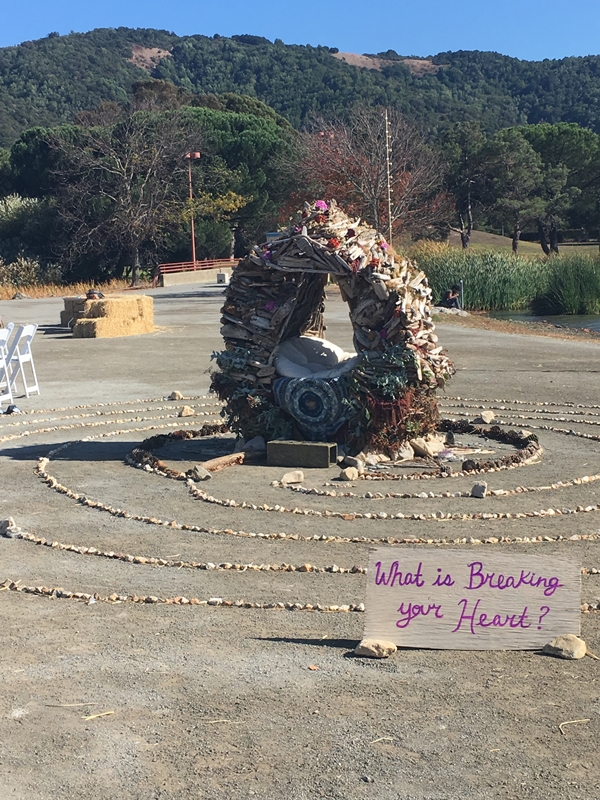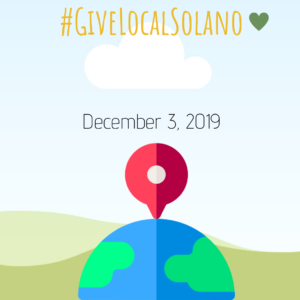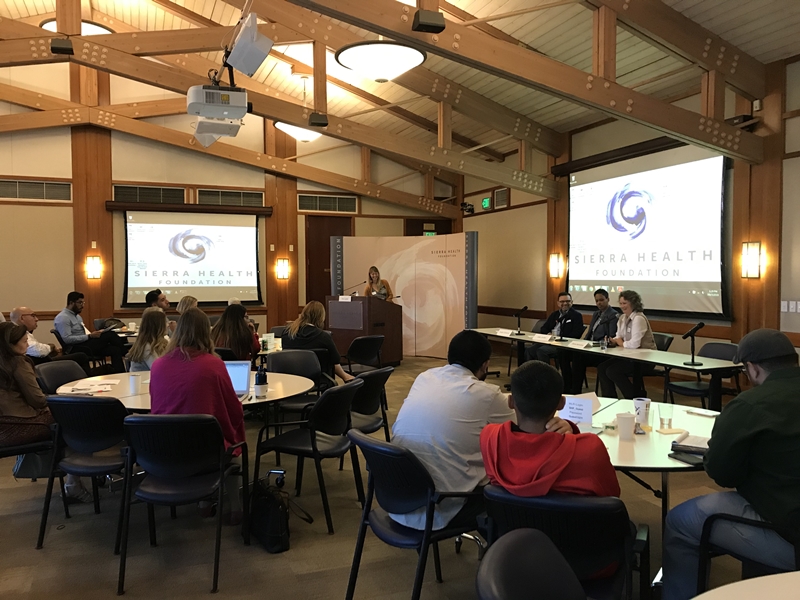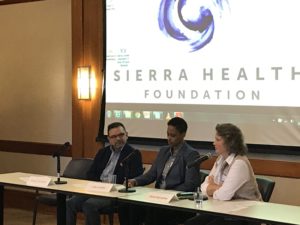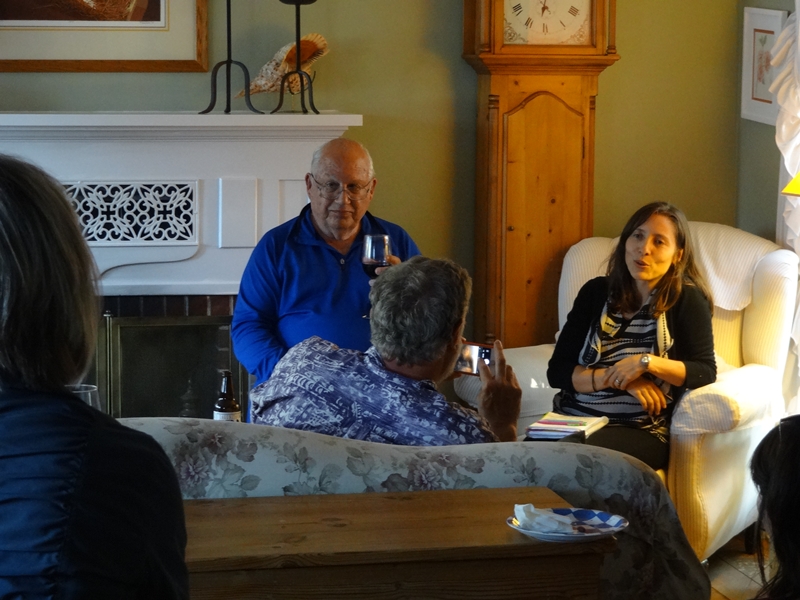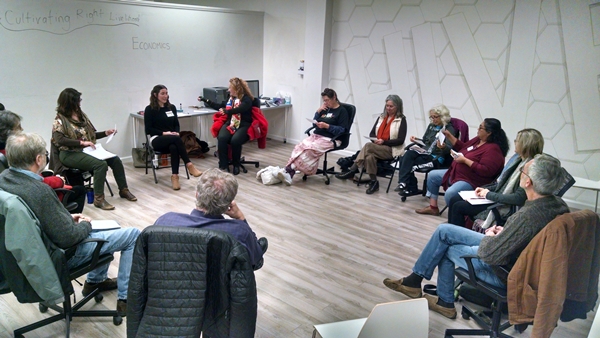What Would Love Do?
By Nicole Newell, Sustainable Landscaping Program Manager
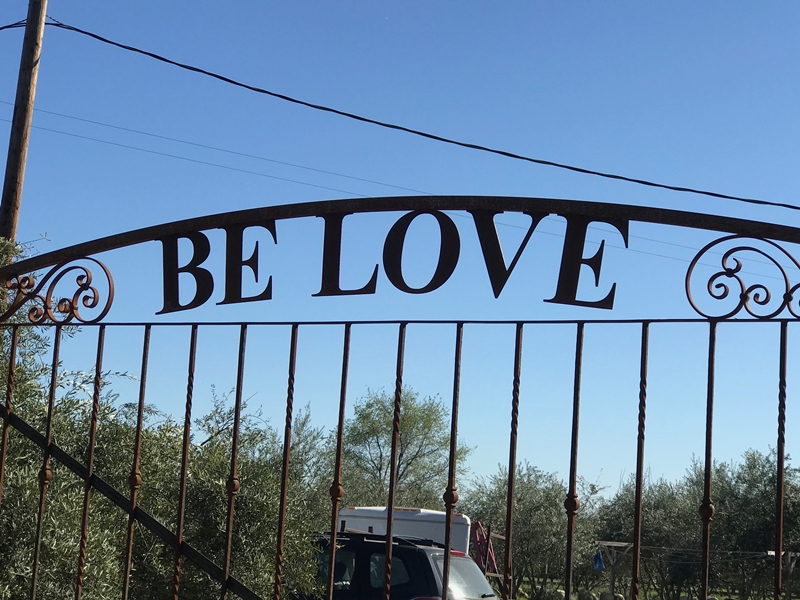
March 12 was the first day that the collective unease of the coronavirus was on everyone’s mind. I arrived at the Heart Based Leadership workshop and was greeted by a Be Love sign, which made me smile. This daylong intensive workshop for women on personal growth and development wasn’t cancelled. About 25 women were gathered and most of us were strangers. The first hour of the morning was spent eating roasted pecans, farm treats and drinking coffee with raw milk. At first we were a bit uncomfortable as nobody new how to greet each other. The arm bump wasn’t popular yet and we were still allowed to be closer than 6 feet apart. At this point the question was, do we shake hands? Settling down in this farm home was relatively easy as it was extraordinarily beautiful, like out of a storybook, with comforting cream-colored walls, windows overlooking the farm, olive trees, and the scent of fresh baked coconut cookies.
Heart-based leadership on the surface seems light-hearted — rainbows and unicorns. These workshops always end up being much deeper than expected. Terces from Be Love Farm and Chrissy from Eco-Chic were the facilitators. They created a safe, comfortable place for us all to be. They reminded us of the importance of taking care of ourselves but also inviting us to get curious and do what is unfamiliar. The day was filled with deep questions.
Where do you not experience abundance in your life? Where are you stuck in your life? This was the first set of questions asked of the group. Tears filled the room from the women sharing their personal stories. Some cried because of their experiences and others out of compassion. The space and those stories were so sacred that I stopped taking notes and just held space for these women and myself.
We all seemed to share the caregiver archetype and it was mentioned that we experience being overextended when we give from our own resources. What are the specific things that you do to renew your resources? Chrissy shared that she read the 5 AM Club book by Robin Sharma and practices this morning routine. Every day she wakes up at 5 am and spends 20 minutes in prayer, 20 minutes exercising and 20 minutes learning. My first reaction was to judge the club as something that a shallow morning show would promote and I was repelled by the thought. I became more interested when I learned that 5 am is a time when our minds are their most serene and that it is a time when the deep and quiet energy of our hearts are able to softly emerge and also a time when we are receptive to hearing it. One question the group asked Chrissy: Does it matter if it is at 5 am? There are different views on this. Robin Sharma believes it should be 5 am. I read a bit more online and 5-8 am is when there is the least amount of interruptions. The main point is to set time aside to renew for the day ahead. This can be a time to get clear on your vision for your life and then begin investing in that dream prior to it being a reality. This can be a time to listen and hear the calling that is already within. Now is a crucial time to begin our day getting grounded because we are all being called now to live as our highest self.
Much of what I learned that day is coming into practice now while getting adjusted to this new reality we are all living in. Terces spoke about how we judge each other; this is a human trait that we all share. I think about how I am judging the toilet paper hoarders. Fight, flight, freeze is the fear response that most of us are familiar with. The people that are hoarding toilet paper I think of as fighters. Its funny, I haven’t spoken to a toilet paper hoarder yet. When in fear, I freeze and judge. Which brings me back to the next question of the workshop: How do we shift our view about people struggling? When I think deeply about this I realize that they are just in fear. They are expressing fear. I express fear differently, not in a better way. Does it bring out the best in others to greet people’s fear with judgment and self-righteousness? So how do we reframe the experience of the TP hoarders with conscious language? Honestly I don’t know. Yet I know when my boys were little and they were afraid the only thing I felt was compassion and my response was to comfort.
People need to feel safe to be able to share. “I am here for you” is enough. We can listen and be present for each other.
Terces discussed listening skills that help people solve their own problems:
- Listen
- Repeat what they said back to them
- Then get curious and ask them questions like “How do you feel? What do you plan to do about that?” Sometimes we get attached to our diagnosis, to our problem, to our label rather than how we experience the problem. When you ask someone how they are feeling, it helps them move from their head into their heart.
Listen to people and ask more questions rather than making statements. Ask about feeling. Ask about what they love about their life. Listening is the highest form of loving; listen more. Then thank them for sharing. Just listen and empower with conscious language. Call out love in each other. When someone is struggling and in process, speak to who people are becoming by calling forth their highest self and living in the highest expectations of others.
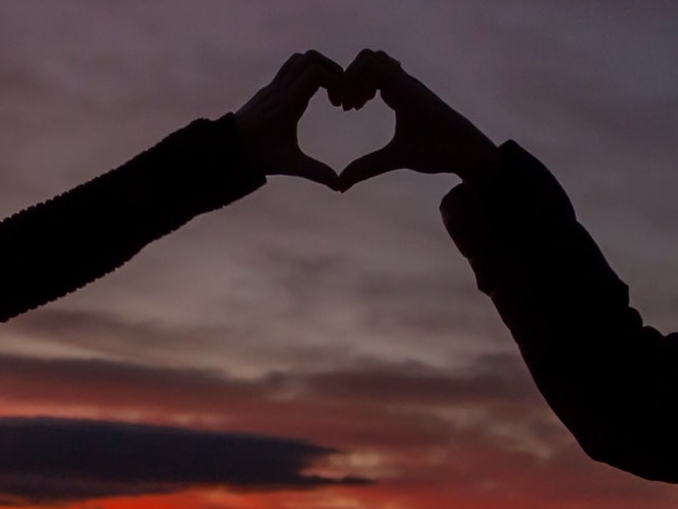
The next set of questions was around betrayal and victim stories. The first step is to recognize that we felt betrayed because we cared about them. Then communicate the feelings that you have for that person instead of condemning them for the betrayal. Forgiveness is to give as before. Here are some questions to ask yourself when you are working on forgiving: Who are you blaming in your life? Where are you a victim? What could you take responsibility for in that situation? Terces challenged us to retell our stories with conscious language that helps us evolve, to write our stories without victimizing anyone. She invited us to see all our sad stories as a gift and to look for the lesson within. Then there are times when we are the one that needs forgiving. Heart-based leaders apologize first and often. Shift the environment, adjust the tool of acknowledgement and call out the best in someone. When you acknowledge devotion in a person, devotion shows up. Devotion can be replaced with any word: love, respect, kindness, generosity …
You have a Voice. What are you not saying? What are you afraid to say? Tell your truth and face your fears, and live a transparent life. Be bold and make requests of people and ask for help without attachment. Make a request and be OK with no. We need to look at our environment and ask ourselves what is needed to bring our unique expression of love to this world.
We can make powerful choices on the thoughts we choose to think and the simple choices that we make. Terces brought out two jars of water and she challenged us to spend a day and when we have a negative thought about ourselves to stop and put a pinch of salt into one jar — to let the thought dissolve and not let it attach, to not feed it. In another jar of water, put a pinch of glitter in the jar every time you have a positive thought. We observed the beauty of the jar with glitter as opposed to the cloudy salt water. When we have cravings and make choices in our lives a simple question to ask is: Does it serve you? Choose what you want that serves you vs. what you crave. What choices would you make if you knew you were fully loved? Live in that truth.
Servant Leadership is a philosophy where the goal as a leader is to serve. One way to serve others is to ask questions. Check in with the people that you are leading and ask: What is one thing I can help you with this week? How am I doing? What are you missing that would make you feel safe?
In addition to asking questions, Terces highlighted the importance of making generous assumptions:
3 Generous Assumptions as a Leader:
- I may not have trained this person well
- I may not have given them the tools needed
- They may discover a better way
The main goal is to provide tools to people to empower them so they self-manage.
Really this workshop was about how to live a heart-based life and in a deep way we are all leaders. With all of this time alone I am getting the opportunity to practice these tools on myself. When I go out into the world and feel the fear all around, my tendency is to judge. Instead I have been practicing radical kindness by making choices that are larger than me. In the past I would look at my phone or pick up a People magazine while waiting in line at the grocery store, now I pray for inspiration and then I talk with the people around me and ask questions. I look for where I have abundance and then pass it on. I am breathing life into that person and calling forth my highest self.
Being more generous and radically kind moves you towards the person that you really are.
One of the simple takeaways for me was to take a deep breath, slow down and ask: What would love do?



